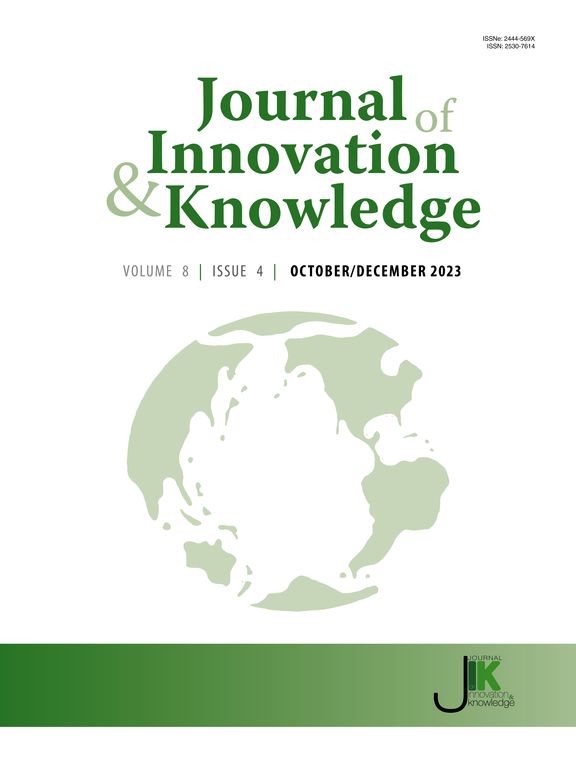创新系统与协同进化发展:系统文献综述
IF 15.5
1区 管理学
Q1 BUSINESS
引用次数: 0
摘要
这篇概念性的文章通过强调创新系统的动态、共同进化的本质,引入了创新系统的新视角。在当今瞬息万变的世界中,创新应该被理解为一种异质的、多维的、不断发展的现象,这种现象嵌入在共同进化发展的复杂模式中。虽然创新系统长期以来被认为是学习系统,但本文通过将学习不仅作为这些复杂结构的内部功能,而且作为设计催化和引导系统过渡的系统干预的功能机制,深化了这一观点。基于系统评价和元分析首选报告项目(即PRISMA)的系统文献综述和定性反思分析,本文将创新系统视为复杂的自适应结构,并将其概念化为协作学习环境,其中各种形式的知识和学习增强了系统干预和学习过程之间的持续反馈循环。通过对85篇学术论文的定性分析,我们发现了三个主题集群,它们通过代理人、制度和创新栖息地的相互作用巩固了创新系统中协同进化的三个维度:(1)协同进化景观;(2)协同进化动态和能力;(3)知识和学习过程。在这些见解的基础上,本文提出了创新系统作为协作学习环境的概念,并将这一概念视角扩展到分析框架和应用机制中,其中知识的整合成为相互学习、建立共识和共同创造系统干预的重要环节。本文章由计算机程序翻译,如有差异,请以英文原文为准。
Innovation systems and co-evolutionary development: A systematic literature review
This conceptual article introduces a new perspective on innovation systems by emphasizing their dynamic, co-evolutionary nature. In today’s rapidly changing world, innovation should be understood as a heterogeneous, multidimensional, continuously evolving phenomenon embedded within complex patterns of co-evolutionary development. Although innovation systems have long been recognized as learning systems, this article deepens that perspective by framing learning not only as an internal function of those complex structures but also as a functional mechanism for designing systems interventions that catalyze and guide systemic transitions. Based on a systematic literature review following the Preferred Reporting Items for Systematic Reviews and Meta-Analyses (i.e., PRISMA) and a qualitative reflective analysis, the article examines innovation systems as complex adaptive structures and conceptualizes them as collaborative learning environments, wherein diverse forms of knowledge and learning enhance a continuous feedback loop between systems interventions and learning processes. A qualitative analysis of 85 academic articles revealed three thematic clusters that consolidate the three dimensions of co-evolution within innovation systems through the interplay of agents, institutions, and innovation habitats: (1) the co-evolutionary landscape, (2) co-evolutionary dynamics and capacities, and (3) knowledge and learning processes. Building on those insights, the article advances the conceptualization of innovation systems as collaborative learning environments and extends that conceptual perspective into an analytical framework and applied mechanism, in which the integration of knowledge becomes an essential link for mutual learning, consensus building, and the co-creation of systems interventions.
求助全文
通过发布文献求助,成功后即可免费获取论文全文。
去求助
来源期刊

Journal of Innovation & Knowledge
Multiple-
CiteScore
16.10
自引率
12.70%
发文量
118
审稿时长
37 days
期刊介绍:
The Journal of Innovation and Knowledge (JIK) explores how innovation drives knowledge creation and vice versa, emphasizing that not all innovation leads to knowledge, but enduring innovation across diverse fields fosters theory and knowledge. JIK invites papers on innovations enhancing or generating knowledge, covering innovation processes, structures, outcomes, and behaviors at various levels. Articles in JIK examine knowledge-related changes promoting innovation for societal best practices.
JIK serves as a platform for high-quality studies undergoing double-blind peer review, ensuring global dissemination to scholars, practitioners, and policymakers who recognize innovation and knowledge as economic drivers. It publishes theoretical articles, empirical studies, case studies, reviews, and other content, addressing current trends and emerging topics in innovation and knowledge. The journal welcomes suggestions for special issues and encourages articles to showcase contextual differences and lessons for a broad audience.
In essence, JIK is an interdisciplinary journal dedicated to advancing theoretical and practical innovations and knowledge across multiple fields, including Economics, Business and Management, Engineering, Science, and Education.
 求助内容:
求助内容: 应助结果提醒方式:
应助结果提醒方式:


